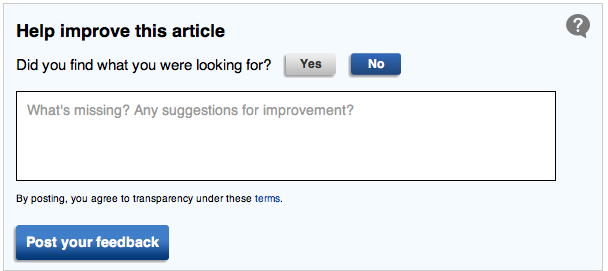In an interesting move to open up Wikipedia even more and to draw in new contibuters and ways to contribute to the greatest encyclopedia project ever, Wikipedia is now experimenting with a new version of Article Feedback Tool. The goal according to Wikimedia’s blog is:
…to engage readers to help improve Wikipedia — and to become editors over time. We’re very excited about this new development, and look forward to getting more people to contribute to Wikipedia as a result.
How do they do this? Check it out:
We are approaching this development in several phases. The first phase, which went live today, is a test deployment of three new versions of the tool on approximately 10,000 randomly selected articles on the English Wikipedia and on a small number of manually selected articles. For examples, see Android, Wikipedia, and Global Warming.
Here is one of the three versions that are being tested:
This new version of the tool asks the reader whether they found what they were looking for, and if not, prompts them to explain what is missing. The intent of this version is to provide editors with some idea of feedback on what readers are actually hoping to see when they read a Wikipedia article. This information may then be used by the editing community when deciding how to improve the page. The other two versions also ask for reader comments, but with different questions: the second version lets you make a suggestion, give praise, report a problem or ask a question; the third version lets you review the article. These new forms were developed by OmniTI, a web development firm, and were based on designs created by the Wikimedia Foundation in collaboration with the Wikipedia community. To learn more, visit the AFTv5 project page.
